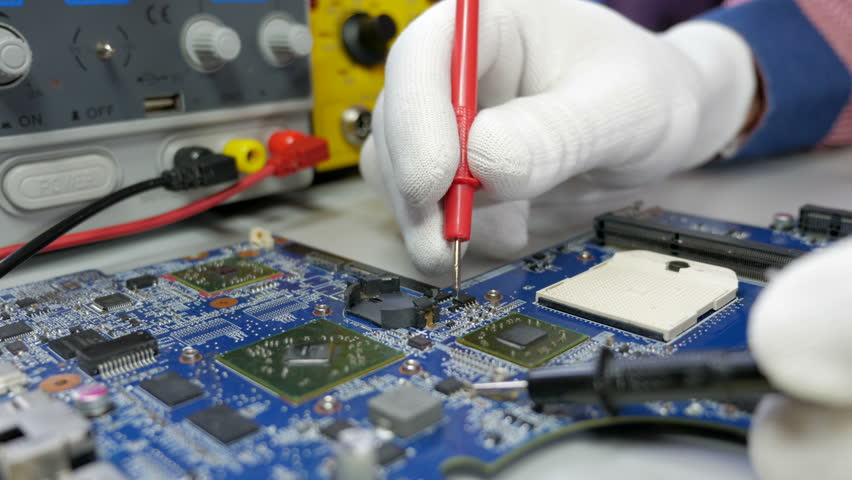Introduction
In the fast-paced world of technology, staying ahead of the curve is essential, especially when it comes to the heart of your computing device—the motherboard. As laptops continue to evolve, so do the intricacies of their internal components. Among these, the motherboard stands out as a crucial element that dictates the device’s performance, capabilities, and potential for future upgrades. In this blog post, we will delve into the latest trends in laptop motherboard, exploring how they contribute to the future-proofing of your machine.
The Evolution of Laptop Motherboards:
1. Miniaturization and Integration:
Over the years, one of the most notable trends in laptop motherboards is the relentless pursuit of miniaturization. As laptops become increasingly portable, manufacturers are challenged to shrink the size of internal components, including motherboards, without compromising performance. Advanced manufacturing processes and the integration of components directly onto the motherboard contribute to this trend. This not only reduces the overall size of laptops but also enhances their power efficiency.
2. Multi-Core Processors and Parallel Computing:
The rise of multi-core processors has significantly influenced the design of laptop motherboards. Modern laptops often boast processors with multiple cores, enabling them to handle parallel processing tasks more efficiently. Motherboards are now designed to accommodate these processors and optimize their performance, leading to improved multitasking capabilities and faster processing speeds.
3. High-Speed Connectivity:
As the demand for faster data transfer speeds increases, laptop motherboards are incorporating the latest connectivity standards. USB 4.0, Thunderbolt, and PCIe 4.0 are becoming commonplace, allowing for quicker file transfers and more robust connections with external devices. These high-speed interfaces not only improve user experience but also contribute to the longevity of a laptop by ensuring compatibility with future peripherals.
Emerging Trends in Laptop Motherboards:
1. DDR5 Memory Support:
The evolution of memory technology is a crucial aspect of future-proofing laptops. DDR5 (Double Data Rate 5) is the latest generation of RAM, offering higher bandwidth and improved energy efficiency compared to its predecessor, DDR4. Laptop motherboards with DDR5 support are becoming increasingly prevalent, providing users with faster and more efficient memory, ultimately enhancing overall system performance.
2. PCI Express 5.0:
The PCI Express (PCIe) standard plays a pivotal role in data transfer within a computer system. The adoption of PCIe 5.0 on laptop motherboards signifies a substantial leap in data transfer rates, doubling the speed compared to PCIe 4.0. This enhanced bandwidth is particularly beneficial for tasks that involve large data sets, such as video editing, 3D rendering, and gaming. Laptops equipped with PCIe 5.0 support are better positioned to handle future applications and demanding workloads.
3. Wi-Fi 6 and Beyond:
Connectivity is a key consideration in modern laptops, and the motherboard plays a central role in facilitating wireless communication. Wi-Fi 6, the latest standard in wireless networking, is becoming a standard feature on laptop motherboards. With faster data transfer speeds, improved efficiency in high-density environments, and reduced latency, Wi-Fi 6 enhances the overall wireless experience. As Wi-Fi technology continues to evolve, future laptop motherboards may incorporate even more advanced wireless standards to keep pace with connectivity demands.
4. Upgradable Components:
Future-proofing extends beyond initial hardware capabilities. Some laptop manufacturers are exploring designs that allow users to upgrade certain components on their motherboards, such as the CPU or GPU. This modular approach enables users to adapt their laptops to evolving performance requirements without having to invest in an entirely new device. While not yet widespread, this trend could revolutionize the way we think about laptop longevity.
Challenges and Considerations:
1. Thermal Management:
As components become more powerful and densely packed, thermal management becomes a critical concern. Efficient heat dissipation is essential to prevent performance throttling and ensure the longevity of laptop components. Innovations in cooling solutions, such as advanced heat pipes, vapor chambers, and improved fan designs, are crucial for maintaining optimal temperatures on increasingly powerful laptop motherboards.
2. Power Efficiency:
The demand for more powerful laptops must be balanced with the need for energy efficiency. Motherboard designs must take into account power optimization strategies to extend battery life and reduce overall power consumption. Advanced power delivery systems, low-power states, and intelligent power management are integral to creating laptops that are both powerful and energy-efficient.
3. Security Features:
With the increasing prevalence of cyber threats, security features embedded in laptop motherboards are gaining importance. Hardware-based security measures, such as Trusted Platform Modules (TPM) and secure boot, help protect user data and system integrity. As laptops become more interconnected, expect motherboard designs to prioritize robust security features to safeguard sensitive information.
Conclusion
In the ever-evolving landscape of laptop technology, the motherboard stands as a linchpin, determining the device’s capabilities and potential for future upgrades. As we look ahead, the trends discussed in this blog underscore the industry’s commitment to pushing the boundaries of performance, connectivity, and longevity. Whether it’s the integration of cutting-edge memory technology, high-speed connectivity standards, or the quest for more efficient and compact designs, laptop motherboards are at the forefront of innovation.
For users aiming to future-proof their machines, staying informed about these trends is essential. Investing in a laptop with a motherboard that embraces the latest technologies ensures that your device will not only meet current demands but also remain relevant and capable in the face of future advancements. The journey towards a future-proof laptop begins with a motherboard that embraces innovation and adapts to the ever-changing landscape of technology.




